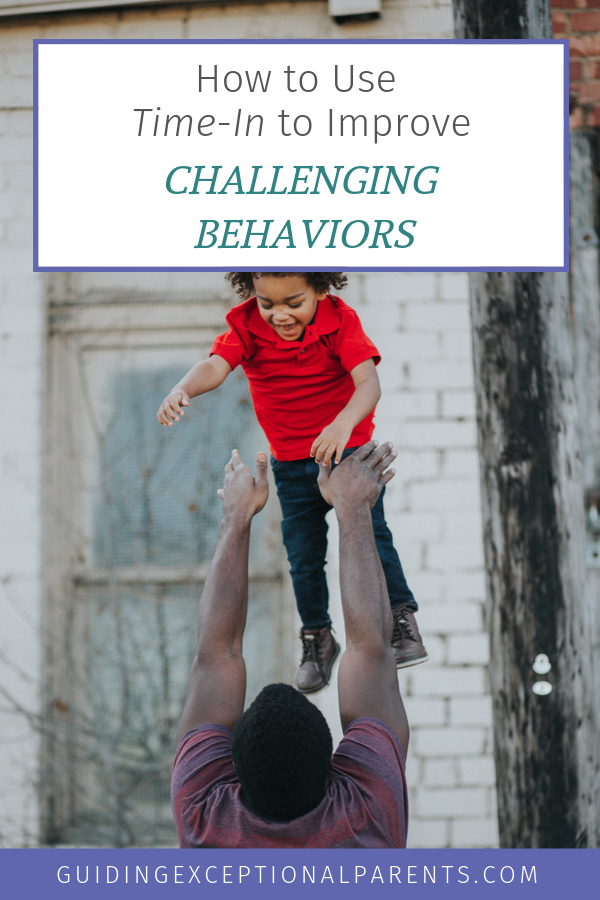by Dan Shapiro, M.D. and Sarah Wayland, Ph.D.
It’s easy to focus on your child’s problem behaviors. It’s like parents are wired to think about what we need to fix, rather than about what is going well. This can be difficult for children, who may start to believe there is something wrong with them; that they are unlovable.
Parents and children both deserve time when they can relax and just enjoy each other. A powerful way to connect with your child is to use Time-In.
Based on special time –as described by Adele Faber and Elaine Mazlish in their 2004 book, How to Talk So Kids Will Listen and Listen So Kids Will Talk, and by Russell Barkley and Christine Benton in their 2013 book, Your Defiant Child — Dr. Dan Shapiro created his own version, which he calls Time-In. This article is based on his version of Time-In as we teach it in his Parent Child Journey class and as published in Dr. Shapiro’s book, Parent Child Journey: An Individualized Approach to Raising Your Challenging Child.
Time-In is a specific time that gives children a chance to feel appreciated and understood for who they are. During Time-In, your child is able to experience your unconditional love, which can dramatically improve your relationship. It gives children one-on-one positive attention, just for being themselves.
How to Do Time-In
1. Get one-on-one with your child
Time-In is about being with your child. It is about devoting your full attention to them. To the extent possible, your child should not be distracted by other people during Time-In. Neither of you should be able to see or hear other children or other adults. This means that you should do Time-In when other children are with other adults, in school or at daycare, asleep, or doing something independently.
2. Follow your child’s lead
Time-In is for doing whatever your child wants. You can plan this ahead of time, or you can choose a regular activity that you look forward to doing together. Often, it is easiest to just join in with whatever your child is doing.
Start by observing your child. This will help you ease into their world. Once you understand what your child is doing, describe what you see out loud. Think of yourself as a narrator or a sports broadcaster. Be specific and focus on the activity. For example, “Hey, look at the way…” or “That [thing] is going really fast!” You can keep up with this running commentary as long as your child enjoys it; some kids love it while other kids don’t.
3. Give custom-designed, positive attention
Children like different kinds of attention, so you need to figure out what your child likes best. The goal is to communicate that you appreciate what they are doing. Positive attention can be verbal or nonverbal.
Verbal praise should involve positive statements about what you are seeing. For example, “That was amazing when you….” Be sure to comment on the effort, not on the child. For example, “You worked so hard to figure that out!” is better than, “You are so smart!”
Some kids prefer nonverbal positive attention. This can be a smile or a wink; a gesture, such as thumbs up; or a reinforcing touch, such as a pat on the back or a high five. For some children, just being there for them is all they need.
4. Spend time with each of your children
Parents often begin Time-In because one child has behavior problems or developmental challenges that put stress on the parent-child relationship. But siblings of challenging children need attention, too. Parents should plan to do Time-In with each of their children. If you can’t make it work every day, think about how often your schedule will allow it.
5. Plan ahead
Ideally, each parent should do Time-In for 15 to 20 minutes each day. Setting aside time like this will require you to think carefully about when and how to make it work. If you can only do Time-In on the weekends, that’s okay! Any Time-In is better than no Time-In.
For some children, start and finish times should be announced ahead of time. Other children, especially older kids, respond better to an indirect approach where the parent seizes the moment as it presents itself, and joins the child in whatever they are doing.
Time-In can end after a predetermined period of time or when the opportunity to end presents itself. If it is difficult to end Time-In, think about what you can do afterwards that is also fun, such as eating a meal or watching videos together. Experiment to determine what works best for your family.
Think ahead about where you will do Time-In. The space should be safe and child-friendly. You do not want to worry about whether your child is damaging something during Time In.
What to Avoid During Time-In
1. No distractions
Your focus should be completely on your child. Do not do Time-In when you are in a hurry or preoccupied. Turn your phone off and don’t try to do chores. It is best to do Time-In when you are not rushing off to another obligation immediately afterwards. Clear your mind. This is a time to completely appreciate your child. Remember that Time-In is not a way of life. Instead, it is a respite from the normal demands of parenting.
2. No questions, commands, or teaching
This can be extremely difficult. We spend a lot of our time as parents teaching and getting our children to do what needs to be done. But when you ask a question, give a command, or suggest a different approach, you are not following your child’s lead. Remember that Time-In is not for teaching or getting your child to do something. Time-In is a break for you and your child.
3. Avoid passive activities
Passive, self-absorbed or isolating activities, such as watching TV, reading or listening to music, are not the best choices for Time-In. If your child is not actively doing something, there is no opportunity to observe them or comment on what they are doing. However, if passive ones are the only activities your child will do with you, your nonjudgmental presence may be all they want. Over time, this kind of Time-In sometimes evolves into something richer. If this is the case for your child, do what you can.
4. Don’t change how your child is playing
There is no teaching or commanding during Time-In. So if your child does something you don’t like, you must let it go. If your child is engaging in violent play, say something like, “That (action figure) sure is angry!” If he or she cheats, act as if the rules of the game have changed (think Calvin Ball from Calvin & Hobbes). If your child wants to win, set the game up so you will lose. If a toy is used in ways that defy custom, play along. During Time-In, you must abandon your ideas about how things should be.
5. Don’t correct serious disruptive behavior
Disruptive behavior during Time-In is extremely rare. If there is misbehavior, it is often because a parent forgot the rules and questioned, taught, or issued a command. Think about it: If you are not expecting anything from your children, what are they rebelling against? But if your child does misbehave, briefly ignore them and return to the activity. If the misbehavior is truly not ignorable or unsafe, end the Time-In and try again tomorrow. Do not ever withhold Time-In as a punishment. It should be a respite from whatever else is happening in a child’s life.
In Summary…
Time-In gives children one-on-one positive attention on a daily basis just for being themselves. When done properly, this change in your daily routine can dramatically improve your relationship with your child and decrease problem behaviors.
It is a time when you do not have to question, teach, or issue commands. During Time-In, your children do not have to bend to the will of others. It is a wonderful way for your child to experience your unconditional love.
Do you have a Time-In routine with your children? What do you like about it? How has it changed over time? Let us know in the comments!
Do you need help with your child? Sarah Wayland can help you figure out how to support your child via classes, Special Needs Care Navigation services, Parent Coaching, or as your certified Relationship Development Intervention (RDI) consultant.
Share this post on Pinterest!


It makes sense that you should help your child with their behavior by spending some time alone with your them in an environment where they cannot be distracted by others. My son has been getting upset at school because he has a difficult time paying attention to something for more than a few minutes, and I am trying to determine if this is a behavioral issue or a disability since he tends to throw tantrums when he gets bored at home. Maybe I should find a way to assess my child’s current state in order to determine how I can help him.
Hi Derek! I’m a big fan of trying to understand the root of a behavior. While this article addresses situations where the kid doesn’t feel understood or appreciated, there can be lots of other reasons for a child to get upset. I’d urge you to look at his school situation and determine if there are patterns to his behavior.
Is it always at a certain time of day (is he hungry? tired? etc.)?
When he is around certain kids or with certain teachers?
What is he being asked to work on? (For example, if he always gets upset during writing, it might be worth looking to see what it is about the writing that is hard for him.)
Is it in a particular physical location (e.g., near the door or window with interesting things to look at outside)?
This can help you understand why he might be having trouble paying attention. Getting someone to do a *good* functional behavior assessment would be very useful, I think.
Best of luck – I know how hard it is to see your child struggling. Just remember that kids do well when they can.